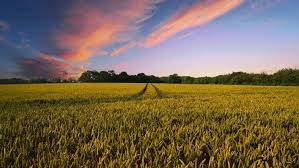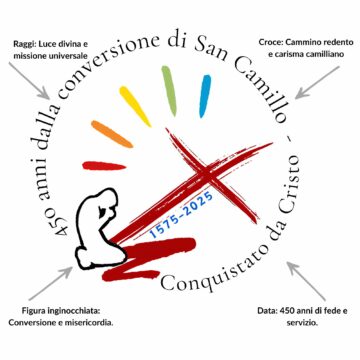On the anniversary of World Earth Day, 22 April, I have chosen to publish the article by Camillian religious Fr Mario Bizzotto (Rossano Veneto, 26 December 1934 – Verona, 16 January 2020) from which emerges a heartfelt and melancholic appeal of what we have all lost and are still losing in a world raped by progress driven by profit alone.
My generation and the previous ones have the good fortune to be able to remember the world illustrated by father Bizzotto with the colours and scents that punctuated the succession of the seasons, but at the same time we have the sadness at being able to think that all this no longer exists and that future generations have also been deprived of the possibility of a memory of so much beauty. It is we, therefore, who must be indignant because we are the mnemonic repositories of this beauty and we must ensure that it is passed on to future generations in such a way that they can have an idea of beauty and of what is of value in the world beyond the purely economic factor so that they know what they must preserve and protect because, as the author himself says quoting Dostoewskij, it is beauty that will save the world.
**************
The rare moments when we discover that things are as they should be, that is, in harmony with man, offer us moments of happiness and also make us experience beauty. Those who are sensitive to all things beautiful will feel ashamed of any havoc that devastates creation.
Increasingly aggressive land destruction is one of the most offensive insults perpetrated against nature. Some of the most fertile land is invaded by concrete every year. Once taken out of cultivation, an irreversible process begins. They are destroyed forever. If this savage encroachment of construction is not curbed, there will be consequences with irreparable damage.
Today, the city no longer has borders. Our ancient cities were well demarcated with walls, which kept them clearly distinct from the countryside. Now they spread like a contagion. They are connected with dwellings to other centres. The landscape takes on the face of a uniform world, which lacks the countryside. There are still areas of cultivation, but they are dotted with houses, crossed by pylons, interrupted by roads. The sense of the countryside has disappeared.
Pictures were taken at night from above on the plain stretching from the north-west to the north-east. The landscape in front of them is an uninterrupted panorama of lights that suggests the presence of a huge city. Where is the countryside? Where the cultivated expanses? The image is a mirror of ecological degradation.
It denounces a lack of law and order with respect to nature. We can no longer afford to squander vegetable land. There is a boundary that must be respected, otherwise it is nature itself that backfires and gives back to us what has been given to it: pollution of air, water, rivers, streams, lakes, to which climate change is linked.
The push towards the countryside
The citizen waits for holidays to escape the city, its complications of customs, labels, fashions, business, meetings and obligations. Finally, he can change the pace of life and say: let’s go to the country! A more than legitimate purpose. It expresses the aspiration for greater freedom. But if the countryside does not exist, it only turns in on itself. Basically, one is still in the city. One has the illusion of emigrating to other, more peaceful places, one has the illusion of entering a different, simpler, more human life. It is not quite like that. In ‘our countryside’ we still find the city with the same tastes, the same foods, the same customs, the same tools of technology: television, radio, cars, motorbikes with their deafening noises. No. The countryside has long since died. It is no longer the place of solitude, silence and calm.
Village festivals and fairs are still preserved. They are celebrated with an invasion of people one does not know. They have nothing to do with the real festivals, those that offered the opportunity to meet familiar people, allowed people to meet, converse and feel community. Even festivals suffer the fate of degradation: gatherings of unknown people, packed restaurants, movement of cars and a lot of noise. The village is becoming a re-edition of the city. Just as the city has lost its borders and with the borders it has lost part of its traditions and identity.
One is led to the countryside by a different need for life: more authentic and human. One is drawn there by many expectations, which are not always fulfilled. One looks there for what is lacking in densely populated clusters. One does not want to come across shop windows and shops that flaunt what one does not have, nor does one have the opportunity to buy. One is more than saturated with meeting only busy men, people who pass by but have distant, absent faces. Once in a while one also wants to see people with whom one can converse. It is also pleasant to meet animals, to see plants and admire their foliage. And how soothing it would be to walk in solitary paths that conciliate to the stillness of the soul.
The tampered landscape
I still have in my memory a mountain district, a group of houses set within a frame of peaks. Those houses were well situated and gave an impression of modesty and rustic taste. They exhibited nothing overly elegant. They were simple one-storey buildings. On the windowsills were pots of geraniums and cyclamens, which harmonised with the surroundings.
We were not doing a fancy performance. It would have been out of place. Everything was as simple as it should be in its context. There were no signs of the pageantry that some villas in contrast to the austerity of the mountain environment flaunt, showing more wealth than good taste. There were offensive colours, plastic window frames, overly prissy paths and flower beds. Nature wants simplicity, it rejects artefacts of shameless and offensive luxury. As long as the district is not attacked by cranes or wealthy owners and is respected in its candour, as long as it is maintained as it was intended by clean, poor yet dignified mountain people, it will always be a pleasing example to the eye of the wayfarer, who feels welcomed and fulfilled in his expectations.
The village was cosy. It still maintained a clear separation from the countryside. Here one had the impression of being in an original order, not yet contaminated by the irreverent aggression of money. A few haystacks stood in the nearby meadows, showing the diligent hand of the farmer and at the same time presenting a picture of a centuries-old tradition.
Returning there a few years later, I felt a disappointment equal to the joy I had felt before, when in the contrada I had discovered the ideal agreement between man and nature. The haystacks had disappeared. Some meadows had been supplanted by new houses and others were being built. The innocence of the original landscape was tainted, the homogenous group of houses no longer existed. The new houses did not fit the style of the previous era. With the disappearance of the old hamlet, an era of measured lines and respect for nature was doomed to sunset.
Future generations will have no inkling of what it means to live in harmony with nature. They will find it more congenial to their mentality to flaunt wealth and comfort. They will not feel the need to love not only the dwelling, but also the environment.
The experience of beauty
In the contemplation of a clean nature one encounters the first and truest experience of beauty. One is as if surprised by enchantment. Everything says: here one must pause, here one breathes peace. Many have spoken of beauty observing that it is a harmony of lines that surprises and fascinates. Of course it is not just that, but it is enough to explain to ourselves the pleasurable feeling we get when we come into contact with the original face of creation. It is not only beauty that comes to us. That which is beautiful is always united with that which is healthy and invites a commitment of care and fidelity against the possible dangers of breakdown and pollution.
Dostoewsky is the author of a saying that has become worn out by usage and yet is always true: it is beauty that will save the world. It not only saves the landscape, it also saves man. He needs, however, to find the gentle soul capable of perceiving the messages of a landscape: of a sunset, of a meadow in bloom, of an Alpine pond, of a lush plant. He who lets himself be surprised by the call of nature will not always have satisfaction in the things he is forced to encounter. He will not be able to avoid a squeeze in his heart every time he sees a crane hoisted up in the middle of a meadow. He who is sensitive to all things beautiful will feel ashamed at any havoc that devastates the original order of creation. If it is true that beauty will save the world, it is equally true that what is ugly and dirty will destroy it. He will therefore find it right to reject it even if it is as useful as an industry is or as convenient as an antenna is. It is always something that consumes, ruins and destroys.











